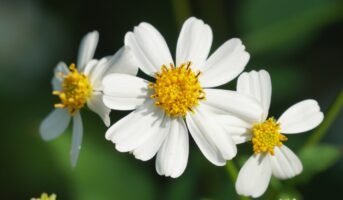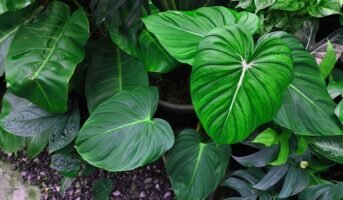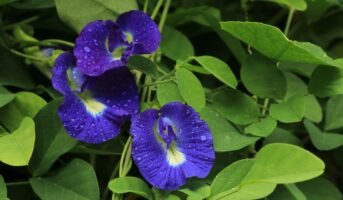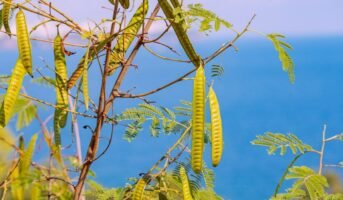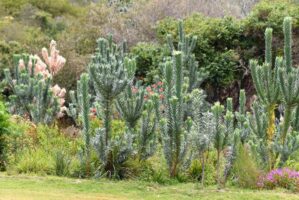For Indians, the Bakul tree (Mimusops elengi) has high mythological and religious significance. It finds mention in several ancient Hindu scriptures and also in Ayurveda as a therapeutic plant. Its flowers are said to be the signs of the emergence of spring or “Basant” in India. The entire tree has a pleasant aromatic aura that can be distinguished easily by botanists and common people alike. The white (or yellowish) flowers are adorned by tribal women as ornaments because of their fragrance and beauty.
Now, these are the common facts that almost every one of us is aware of. But what if you wish to grow a Bakul tree in your urban jungle, i.e., in a pot? You should then be aware of all the scientific and realistic facts about the Spanish cherry to keep it well.
Bakul tree: Key facts
| Species Name | Mimusops elengi |
| Common names | Spanish cherry, Bakul, medlar, bullet wood |
| Height | 12-15 m |
| Family Name | Sapotaceae |
| Distribution Range | Tropical – South and Southeast Asia, Northern Australia |
| Uses, If Any | Ayurvedic medicinal use – astringent, anthelmintic, teeth care |
| Best Season | Monsoon |
| Care and maintenance |
|
Bakul tree: Physical description
The Spanish cherry is an evergreen tree growing to a height of 12-15 metres. You may grow it in your terrace garden if you do not have a proper yard. The tree has a short trunk with brown outer bark, reddish-brown inner bark and white latex. Its dense rounded crown is one of its distinguishing features, besides its leaves that grow up to 10 cm long and 5 cm wide, elliptic, coriaceous, and somewhat shiny. The white flowers are small, star-shaped, and pretty with a creamy-white texture and sweet fragrance.

Source: Pinterest
The Bakul berries are ellipsoid, one-seeded fruits that grow orange-red when ripe. In India, the flowering and fruiting of the Spanish cherry takes place between January and March.

Source: Pinterest
Bakul tree: How to grow?
The medium-sized evergreen tree can be cultivated at home by sowing seeds in containers. After these germinate within 17-80 days, you may plant them outside, in your garden or backyard.
Plantation
Firstly, dig a hole about 45 X 45 X 45 cm in the ground and add some vermicompost to it. Plant the tree and add some water to it. The soil needs to be well-draining to protect the roots. Bakul grows well in slightly acidic and neutral soil, and it also fares well in saline soil. However, the tree is so sturdy that it can also grow well in basic soil. Bakul is a survivor and can survive extremes of temperatures, including drought.
Bakul tree: Care tips
This evergreen tree requires little or no maintenance from the cultivator. Just some regular checks and watering will yield great results in no time.
Bakul tree: Sunlight requirements
Like any tropical plant, Bakul needs full sun and temperatures of 25-35 C for optimum growth. So plant the tree in an area that receives sunlight throughout the day.
Bakul tree: Watering requirements
The best season to cultivate a Bakul tree is the monsoon. Being a tropical tree, its water requirement is high, but you need to check the soil for signs of moisture before watering. It is best to skip watering for a few days when it rains (if the plant is outdoors or in a place accessible to the downpour).
Bakul tree: Fertiliser requirements
Bakul is way stronger than many other tropical trees, and hence, any good-quality organic fertiliser will do the job right.
Bakul tree: Soil requirements
To ensure the healthy growth of Bakul trees , it is important to provide them with well-drained, loamy soil that has a slightly acidic to neutral pH level (5.5 to 7.0). The soil should be enriched with organic matter for adequate nutrient content and moisture retention.
Bakul tree: Temperature and humidity requirements
Bakul trees thrive in warm climates with temperatures ranging between 20 to 35 degrees Celsius (68 to 95 degrees Fahrenheit). They prefer a moderate to high humidity level, ideally between 50 to 70 percent. Adequate humidity helps in maintaining healthy foliage and promotes flower production. Protection from strong winds is also important, as excessive wind can damage the tree and hinder its growth. Providing the right temperature and humidity conditions will ensure the optimal development of Bakul trees.
See about outdoor plant
Bakul tree: Uses and benefits
Bakul is mentioned in several ancient scriptures of the Hindu culture, including Ramayana.
There’s even a myth that if some wine is sprinkled on the mouth of a beautiful lady, flowers of the Bakul tree emerge from her mouth. In Ayurveda, too, Bakul has immense medicinal significance.
- Fruits: The ripe fruits of Bakul are pressed into a pulp and used in the treatment of chronic dysentery. The seeds are also crushed and made into a paste with some ghee or butter to treat constipation in children.
- Flowers: Dried Bakul flowers are used as snuff to give relief from headaches and acute pains. Both the flowers and fruits of this amazing plant are mixed with other astringents to create a lotion that treats ulcers and wounds.
- Bark: Even the bark of the Bakul tree is an astringent and a febrifuge (used to treat fever). It is also said to increase the chances of conception in women. The decoction from the bark is used for the treatment of tooth diseases.
- Oil from the seeds of Bakul is used for lighting and to make paint.
- The bark is used to prepare aromatic essential oils used for a variety of purposes.
- The flowers are made into ornaments and used as fillings for pillows and decorations
- Even the seeds of the Spanish cherry are used to make attractive, organic necklaces in rural areas.
- Fruits, flowers, seeds and bark of the Spanish cherry have a huge demand in the cosmetics industry.
Bakul tree: Toxicity
The Bakul tree is not considered toxic to humans or animals. Its leaves, flowers, and fruits are generally safe and non-toxic. However, as with any plant, it is advisable to avoid ingesting large quantities of any part of the tree. Some individuals may have allergies or sensitivities to certain plants, so it’s always a good idea to exercise caution when handling or consuming any plant material.
FAQs
Why is the Bakul tree sacred?
It is considered sacred in the Hindu religion because of its mention in numerous Hindu scriptures and mythological references. In Ramayana, the monkey army led by Lord Hanuman uprooted Bakul trees to use as weapons against Ravana.
Can I use the fruits and flowers of the Bakul tree to treat diseases at home?
Although it has a huge significance in Ayurveda, it is best to consult a doctor before using it directly.
Can I grow Bakul in a pot?
Yes, you may try growing a Bakul tree in a container, if you do not have any ground space. However, choose a big container according to the size of the plant and prune the roots every year. But it is preferable to grow it in the ground.
Housing News Desk is the news desk of leading online real estate portal, Housing.com. Housing News Desk focuses on a variety of topics such as real estate laws, taxes, current news, property trends, home loans, rentals, décor, green homes, home improvement, etc. The main objective of the news desk, is to cover the real estate sector from the perspective of providing information that is useful to the end-user.
Facebook: https://www.facebook.com/housing.com/
Twitter: https://twitter.com/Housing
Email: [email protected]

